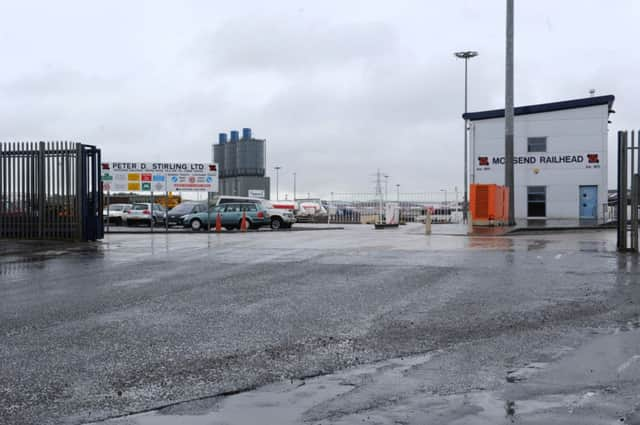Time to give green light to rail extensions


If we are to get more freight on rail – and spread the economic and environmental benefits right across Scotland – then we will need more terminals to provide access to the network. Most locations which generate freight traffic are not big enough to justify their own rail sidings, so regional railheads are required to allow local road collection and delivery to complement the rail trunk haul.
Currently there are national hub railheads at Coatbridge, Mossend and Grangemouth, handling intermodal (container) traffic – and these play a major role in Scottish export business as well as domestic supermarket supply chains. Supermarket traffic also extends northwards to railheads in Aberdeen and Inverness, keeping scores of heavy lorries off the A90 and A9 every day. Scottish exports such as timber products, food and drink are back-loaded to England in the returning containers.
Advertisement
Hide AdAdvertisement
Hide AdHowever, there are significant gaps in the network of railheads. Speyside is a major generator of freight traffic – both inwards barley and outwards whisky to maturation plants in Central Scotland – but currently 100% of this moves by heavy lorry, with inevitable consequences for carbon emissions and road safety. A recent trial demonstrated that rail is an option, and now a viable train service plan has to be identified – and in part this depends on having the right facilities at each end of the rail transit. There are potential railheads at Elgin and Keith, in the heart of whisky country, and a mothballed branch line leads to the large maltings and substantial new distillery at Roseisle, just north west of Elgin. And major whisky plants and warehouses at the likes of Cameron Bridge/Leven and Cambus/Blackgrange (near Alloa) lie adjacent to existing or mothballed rail routes – offering scope for direct rail siding access, thereby cutting out the need for local road delivery.
Building new rail facilities or upgrading existing ones can be expensive – but assistance is available from the Scottish Government’s Freight Facilities Grants (FFG) scheme, which can fund up to 75 per cent of the cost of capital facilities of rail where sufficient environmental benefits can be demonstrated from the shift from road to rail. However, new railheads (which require significant volume to be viable) are likely to be used by a variety of rail customers rather than being justified by the throughput of a single company. And in these uncertain economic times it can be difficult to secure commitment to rail across a range of companies for the relatively lengthy period – typically three to five years – which FFG rules require.
This barrier to terminal development isn’t just holding back the establishment of freight railheads in parts of Scotland which are at present completely dependent on road haulage. Scotland’s ‘inland port’ at Coatbridge Freightliner Terminal has been playing a key role in transporting Scottish exports by rail to the big five Deep Sea ports in England since 1970 – but is still dependent on 1960s-vintage cranes to transfer containers from lorry to train. Today, few long-term contracts exist in the highly competitive container transport business, so it has proved impossible to secure the cross-company commitment required to meet FFG rules. And yet with 21st century equipment, Coatbridge Freightliner Terminal could double its efficiency, cut costs for existing customers, improve Scottish exporters’ access to markets, and reduce emissions and road congestion. It is time for the Scottish government to revisit the FFG criteria and reflect trading conditions in the modern logistics industry.
Other parts of Scotland stand out as serious gaps in the Scottish rail freight network. Dundee is one of the largest cities in Britain with no rail freight facilities, and indeed there are none anywhere on Tayside. Ideally, rail would be reconnected to Dundee docks, providing a tri-modal (rail, sea and road) facility, which could assist the city to attract oil platform decommissioning work. But in any event there is an alternative low-cost start-up rail location available nearby – which unfortunately has not found favour to date with city planners.
A renewed push for rail across the country cannot rely purely on the efforts of the rail freight industry itself. Potential rail customers may have to modify their supply chain arrangements to get the most out of rail – notably day-to-day reliability, long-term commercial resilience and environmental benefits – and the Scottish government will need to be more imaginative in the way it uses its grant schemes to help secure the very substantial economic and environmental benefits which a rail freight resurgence would bring to Scotland.
• David Spaven is Scottish representative of the Rail Freight Group
www.rfg.org.uk
SEE ALSO